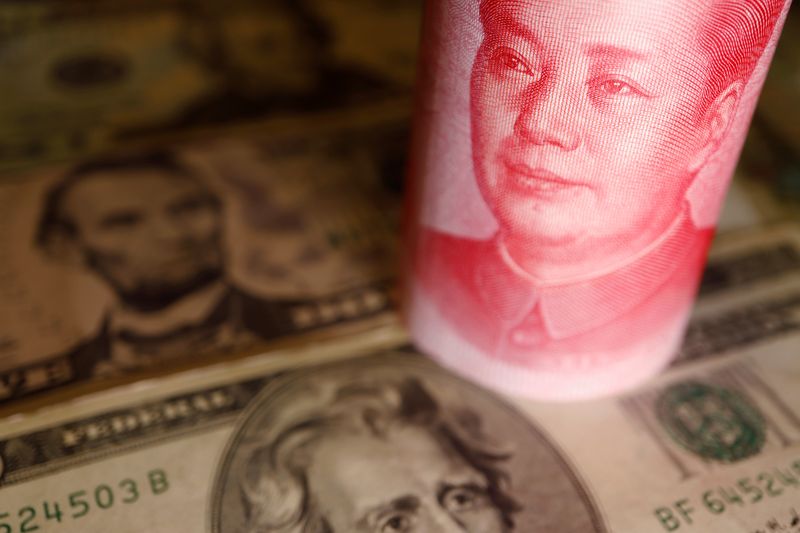SHANGHAI (Reuters) -China's central bank said on Monday it will cut the amount of foreign exchange reserves that financial institutions must hold, a move seen as aimed at slowing the yuan's recent depreciation.
The People's Bank of China said it would cut the foreign exchange reserve requirement ratio (RRR) to 6% from 8% beginning Sept. 15, according to an online statement.
The PBOC said the reduction aimed to improve "financial institutions' ability to use foreign exchange capital," the statement added.
The move came after the Chinese yuan's recent slide to two-year lows. The yuan has depreciated by 8% against the dollar in the year to date, as a result of broad dollar strength in global markets and China's worsening economic slowdown. [CNY/]
The reduction in reserve requirements would boost dollar liquidity. Based on end July data, when foreign exchange reserves stood at $953.7 billion, the lower requirements would free up around $19 billion.
"It is not a huge amount compared to cross border receipts," said Frances Cheung, rate strategist at OCBC Bank.
"Still, the market is mindful of the signal the central bank sends."
Both onshore and offshore yuan briefly bounced about 200 pips following the PBOC statement and pared some of their earlier losses.
Some traders and analysts said the cut was expected and was partly a signal to the market that rapid declines in the yuan would be unwelcome.
"As recent daily yuan midpoint fixings persistently came in stronger than market expectations, the PBOC's official action to stabilise the yuan was already within market expectations," said Ken Cheung, chief Asian FX strategist at Mizuho Bank.
The PBOC has been setting firmer-than-expected midpoint guidance rates over the past two weeks, with many market participants interpreting it as a sign of official efforts to rein in the yuan's weakness.
Bruce Pang, chief economist at Jones Lang Lasalle (NYSE:JLL), said Monday's announcement showed that the authorities have started to adopt appropriate policy tools and macro-prudential tools to iron out excess yuan volatilities.
"It could cool down one-way depreciation bets against the yuan and alleviate the pressure of a fast yuan depreciation," Pang added.

Major investment houses have cut their yuan forecasts as its fall against the dollar accelerated since mid-August, with some expecting a breach of the 7-per-dollar milestone before next month's politically sensitive Party Congress despite authorities' efforts to slow the slide.
The PBOC last cut the FX reserve requirement ratio by 100 basis points in April, in a bid to rein in a sliding yuan and make it less expensive for banks to hold dollars.